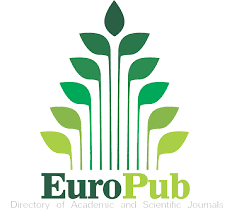THE INSURED'S LEVEL OF CONFIDENCE IN ESSALUD BASED ON THE HEALTHCARE SERVICES IT IS RESPONSIBLE FOR PROVIDING TO ITS COVERED POPULATION, 2008 – 2021
DOI:
https://doi.org/10.24265/iggp.2024.v11n2.02Keywords:
Output value, Out-of-pocket spending, Health services, Quality, EficacyAbstract
The research aims to evaluate how the quality and provision of health services by EsSalud affects the confidence of its policyholders, and its relationship in terms of efficacy, effectiveness and quality in the period 2008-2021.
The impact of increased inquiries on reducing policyholder distrust is minimal. A very significant increase in consultations would be required to generate a noticeable effect. In contrast, an inverse relationship is observed between the number of patients seen in hospital and distrust in medical care. For every ten additional inpatients, distrust is reduced by four people.
A cross-sectional analysis of 2015 data reveals that policyholders rate the quality of medical care 50% higher than the quality of administrative service. A policyholder with a higher perception of medical service quality is 1,620 times more likely to trust EsSalud than one with a lower perception.
On the other hand, the effect of a better perception of administrative service on trust is smaller. An increase in the perception of administrative service only increases trust by a factor of 1.060.
In conclusion, the quality of medical care is the main determinant of insured people's trust in EsSalud. The provision of services, both in terms of consultations and hospitalization, also plays an important role, although to a lesser extent than perceived quality.
Downloads
References
Dos Santos, M. C., & Marin, H. (2018). Análise do uso de um sistema informatizado por gestores hospitalares. Acta Paulista de Enfermagem, 31(1), 1-6.
Gutiérrez, R. B. (2014). Propuesta de un modelo de gestión institucional para la mejora de la calidad de atención en la unidad productora de servicios de emergencia de adultos, Hospital Nacional Sergio Enrique Bernales, 2013 – 2014. (tesis de doctoral). Universidad Nacional Mayor De San Marcos, Lima Perú.
Hildreth, W. B., Miller, G. J., & Lindquist, E. A. (2021). Modernizing Human Resources Systems for the Public Sector. In Handbook of Public Administration (pp. 239-281). Routledge.
Melinkoff Ramón, V. (2008). Los procesos administrativos. Fac. de Ciencias económicas y sociales. Universidad de Caracas Ven.
Ministerio de Economía y Finanzas (2015). Guía metodológica para la definición, seguimiento y uso de indicadores de desempeño de los Programas Presupuestales.
Olivari Heredia, J. J. (2022). La telemedicina y la atención sanitaria en el marco del COVID-19 en el Hospital de Alta Complejidad–Trujillo 2020-2021.
Petrera, M. (2014). La Atención de Salud en el Perú. Brasília. Disponible en: wpcontent/uploads/2014/06/Artículo_Margarita_Petrera.pdf
Quispe Llanos, R. J. (2023). Tesis doctoral. Modelo de un sistema de información y su incidencia para mejorar la atención del asegurado en EsSalud 2008–2021.
Toledo Morote, Y. G. (2021). La historia clínica electrónica enfocada en el paciente para mejorar la gestión del sistema de información de salud en el Instituto de Enfermedades Neoplásicas (INEN), 2021.
Valdiviezo (2018), “Evaluación de los resultados de gestión para la mejora de la calidad en las Oficinas de Gestión de la Calidad de EsSalud, Lima, 2018”.

Downloads
Published
Issue
Section
License
Copyright (c) 2024 Renan Quispe Llanos

This work is licensed under a Creative Commons Attribution-NonCommercial-ShareAlike 4.0 International License.














